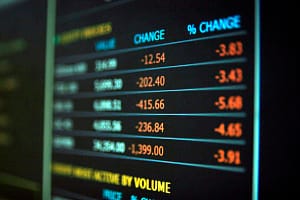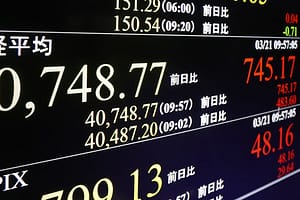By the time the longest bull market in history turned ten years old, in March 2019, many were already speculating that it had to come to an end at some point. But nobody could have predicted the events of 2020. During the second quarter, GDP for all G7 economies suffered their worst drop on record.
In the UK, the looming threat of a no-deal Brexit from the EU poses a continuing risk of further economic damage. The US becoming the world’s hardest-hit country in terms of coronavirus case numbers has led to a two-year low of the dollar against the euro, amid the ongoing uncertainty of November’s presidential race.
After the stock market carnage in March, many investors have been buoyed by its subsequent performance. However, based on performance since early September, there are signs of further trouble ahead. Billionaire investor Leon Cooperman previously accused amateur investors of creating an unsustainable bubble. He may have been right.
The same tech stocks that have been helping power the markets to new records fell sharply, losing over 3% on the Nasdaq Composite in the early hours of trading on September 8. Analysts are now forecasting that even the mighty Apple, the world’s first US company to hit a $2 trillion market cap, could see its fortunes reverse. With other sectors such as retail, travel, and hospitality in the doldrums due to the COVID-19 crisis, investors will no doubt be looking for ways to hedge their exposure to the stock markets.
Given the length of the bull market, many investors are likely to have started their portfolios in the years since the last global financial crisis of 2008-2009. If that’s the case, the concept of hedging assets may be unfamiliar. So here are three asset classes and ways to invest that can be used to diversify a portfolio, hedging against stock market losses.
Gold
Gold has been the staple hedging asset for generations, and it’s been hitting all-time price highs in 2020.

5 Year Gold Chart – Source: Investing.com
Although early September showed a slight downturn in price, this can be attributed in part to a slight recovery in the US dollar. There seems little doubt that this year’s price action is a result of investor confidence in the stock market slipping.
Investing in physical gold comes with its own problems, though. Dealers tend to put a heavy markup on bullion, and you’ll also need somewhere secure to store it. A far easier proposition is to invest in a gold ETF such as the Invesco DB Precious Metals Fund or the Aberdeen Standard Physical Gold Shares ETF.
Gold ETFs do come with a fee. However, they’re generally more liquid than the asset itself and don’t come with the security concerns of physical storage.
Cryptocurrency
Although cryptocurrency is a new asset class, previously untested during a financial crisis due to its age, Bitcoin is faring well so far in 2020. Although it continues to be notoriously volatile, Bitcoin is proving to show a higher correlation with gold during times of stock market volatility.

Source: Skew.com
Many investors may be put off cryptocurrencies due to the poor reputation of digital asset exchanges. However, this has been changing in recent years as reputable payment firms such as Skrill entered the cryptocurrency space.
Skrill has been in business for decades, starting out as Moneybookers in 2001. Since 2018, the company has offered users the ability to buy and sell cryptocurrencies, including Bitcoin, Ethereum, and Ripple’s XRP. Users can easily and securely transfer their Skrill currency balances into cryptocurrencies.
More recently, it branched out into crypto-to-crypto exchange services and expanded its range of altcoin to include assets such as Tezos’ XTZ and Kyber Network’s KNC token. These have gained 88% and 531% respectively, between January and September 2020.
Skrill also offers its users the ability to implement conditional or recurring orders. These are useful for investors to set up a dollar-cost averaging strategy to buy a fixed value of cryptocurrency each month. Dollar-cost averaging is a proven means of reducing the cost of an asset over time.
You could also use Skrill’s conditional ordering to trigger a buy or sell when the asset reaches a particular threshold value if you prefer the idea of buying low and selling high to take advantage of the volatility.
Real estate (REITs)
Commercial rents have taken a beating as a result of COVID-19, so investing in a real estate investment trust (REIT) that operates commercial premises may seem counter-intuitive. However, bear in mind that not all commercial real estate is offices. If you look for REIT with holdings in the kind of real estate that continues to be in demand, there are still returns to be made.
One example of real estate that’s almost immune from any type of recession is space for building data centers. The data center service sector is set to grow at a CAGR of 13.7% in the period leading up to 2025, making it a more resilient choice of investment. There are several REITs that invest purely in real estate for data centers – Digital Realty and QTS Realty are two examples.
Investing in a REIT comes with several advantages. They usually yield high dividends, and they allow investors to put money into real estate markets in distant geographies where returns may be higher than in their home country.
The economic fallout of the events of 2020 have most investors on the edge of their seat. But diversifying your portfolio with hedging assets is a proven way to cushion against any extreme volatility in the stock markets. Any of these assets could also prove to remain profitable during times of economic prosperity.






Leave a Comment